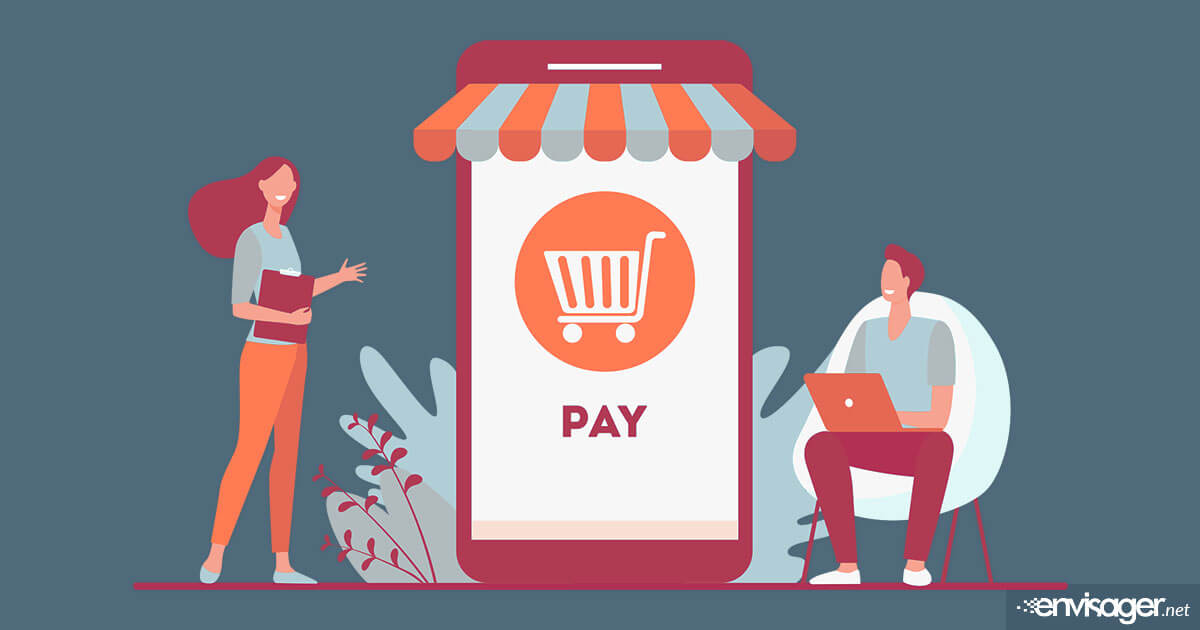What Is Mobile Commerce and The Different Types Of M-Commerce?

Online shopping is scarcely a new idea. However, mobile shopping or m-commerce has grown tremendously over the past few years. In fact, by 2025, mobile commerce is projected to account for over 40% of all online retail operations. And sales estimated to reach $728 billion!
Moreover, m-commerce seems to keep expanding year after year. And that means improving the experience for mobile consumers is essential for business owners in mobile commerce. Providing an optimal mobile user experience has huge advantages. For example, your business can tap into a continuously growing and massive massive.
In this article, we’ll discuss the different types of m-commerce. Let’s get started!
What Are The Different Types Of Mobile Commerce?
Mobile commerce is not just about online retail or e-commerce. Instead, mobile commerce encompasses multiple types of operations and industries. As such, any type of operation that involves transacting money over a mobile device falls under the m-commerce umbrella.
Now, let’s quickly explore the most common types of mobile commerce.
Mobile Banking
In general, banks enable you to operate through their online banking platforms. Or through mobile devices using apps on top of their existing websites. In the U.S., mobile banking is the main way they conduct transaction for a group of users.
Over 90% of Men Z and millennials use mobile banking due to its convenience.

You can also invest using some mobile applications. That means in addition to managing their bank accounts, users can also manage their portfolios using mobile devices. Also, mobile investing applications can possibly account for the growing Gen Z and millennial users.
MOBILE PAYMENTS
Mobile payments and mobile e-commerce apps extend over. Mobile payment platforms and services enable you to receive and send money, as well as process sales transactions. And Venmo is a good example of a mobile payment service.
In just 5 years, Venmo’s user bas has skyrocketed to over 80 million users. In addition to that, their annual revenue grew from $169 to $850 million.
MOBILE E-COMMERCE
These days, most users utilize mobile devices to interact with the web. We know this because according to Statista, 54% of all web traffic in quarter four of 2021 came from mobile devices. Given these points, we can logically assume that many consumers are also purchase through mobile devices.
And from 2016 to 2021, the share of mobile e-commerce operations grew from 52.4% to 72.9%. Just in case you were wondering, these mobile operations include:
- Microtransactions
- Online purchases through online stores and social media
- Subscriptions through services Apply Pay and Google
The uptick in mobile shopping is a bonanza for online shops that offer an optimal mobile experience. On the other hand, if your online shop is inadequate for mobile devices, you’ll likely to lose many potential sales.
You may also enjoy reading: 3 Do’s and Don’ts For Pride Month Marketing As A Brand

Gregory Meyer
DIGITAL MARKETING DIRECTOR
Gregory is the Analyst & Digital Marketing Director at Envisager Studio. His data collection is an important part of each client’s unique website design and social media strategy. In his spare time, he writes about web design analytics, social media, visual marketing, and social influence.


